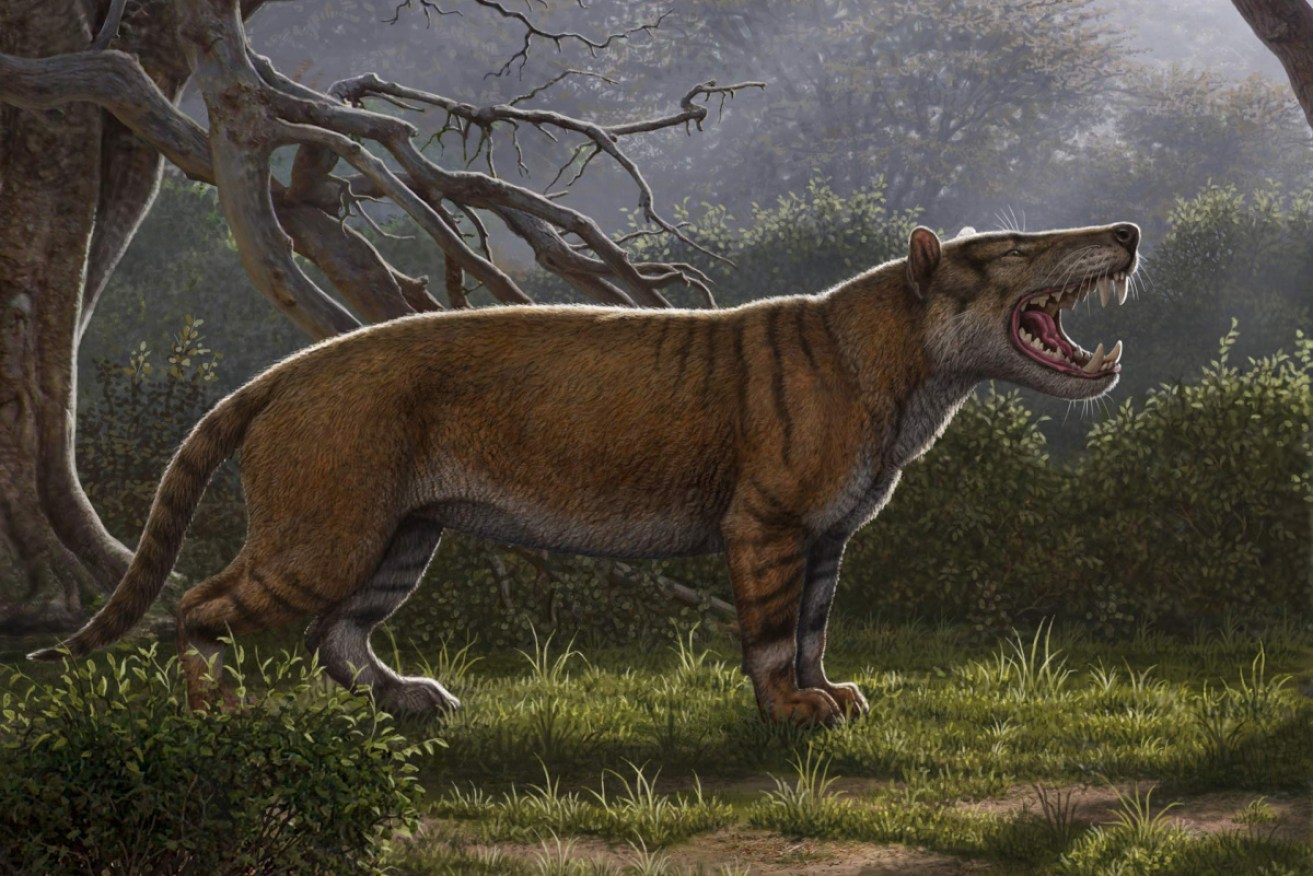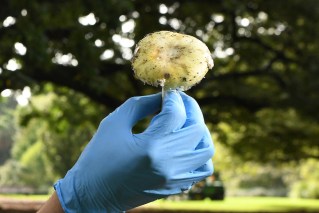Bigger than a polar bear, teeth like bananas: Ancient killer found lurking in a drawer


"Big" lion is bigger than any killer cat lurking on the modern-day plains. Illustration: Mauricio Anton
It must have been a bumper crop of bones dug up in Kenya 30 years ago, when researchers were looking for evidence of ancient apes.
Somehow the fossilised jaw of one of the biggest mammalian killers of all time was stuck in a drawer at the Nairobi National Museum and barely given a second look.
In 2013, palaeontologist Matthew Borths, visiting from Ohio University, opened the drawer and “saw a row of gigantic meat-eating teeth, clearly belonging to a species new to science”.
Big lion, but not really
The species was given the Swahili name simbakubwa kutokaafrika.
Simbakubwa translates as “big lion” – and in fact the long dead carnivore was bigger than a polar bear, with a skull you’d otherwise find on a rhinoceros and teeth the size of bananas, but looking more like the horns of a bull.

The top skull belongs to a modern-day lion. The skull below belongs to the giant killer from 22 million years ago. Photo: Matthew Borths
No doubt, “big lion” – which weighed up to 1500 kilograms – made short work of early monkeys and apes that were evolving at the time, about 22 million years ago.
But it turns out that “big lion” wasn’t a lion at all, or even closely related to big cats or any other mammalian carnivore alive today.
Instead, according to a statement from the University of Ohio, simbakubwa belonged to an extinct group of mammals called hyaenodonts, the first mammalian carnivores in Africa.
All relatives died out years ago
Hyaenodonts were part of a large and diverse order of carnivores called creodonts, that were long thought to be the ancestors of modern carnivores. This is no longer believed to be the case, and so no modern relative of simbakubwa exists.
Creodonts had heads that appeared too large for their bodies, supported by large bones structures and muscles. This may have led them into an evolutionary dead end.
The hyaenodonts, however, had a good run: for about 45 million years they were top of the food chain in Africa, flourishing in near-isolation until the Earth’s tectonic plates connected Africa with the northern continents, allowing movement of animals and plants between land masses.

The long dead “big lion” compared to a modern human. Illustration: Mauricio Anton
Around the time of simbakubwa, according to the University of Ohio, the relatives of cats, hyenas, and dogs began to arrive in Africa from Eurasia. As the relatives of cats and dogs were going south, the relatives of simbakubwa were going north.
Global ecosystems were changing between 18 and 15 million years ago as grasslands replaced forests and new mammalian lineages diversified.
“It’s a fascinating time in biological history,” Dr Borths said. “Lineages that had never encountered each other begin to appear together in the fossil record.”
Not much of a sprinter
“We don’t know exactly what drove hyaenodonts to extinction, but ecosystems were changing quickly as the global climate became drier. The gigantic relatives of simbakubwa were among the last hyaenodonts on the planet.”
It’s been noted that simbakubwa wasn’t built for the chase, as lions and other cats are. Instead it would have likely hidden its bulk in bushy shadows and ambushed its prey. This would have conserved its energy – vital for a creature of such immensity – but it also would have limited its hunting options, as quicker animals arrived on the scene.
“Simbakubwa is a window into a bygone era. As ecosystems shifted, a key predator disappeared, heralding Cenozoic faunal transitions that eventually led to the evolution of the modern African fauna,” Dr Nancy Stevens said, Professor in the Heritage College of Osteopathic Medicine at Ohio University and co-author of the study, published in the Journal of Vertebrate Paleontology.








